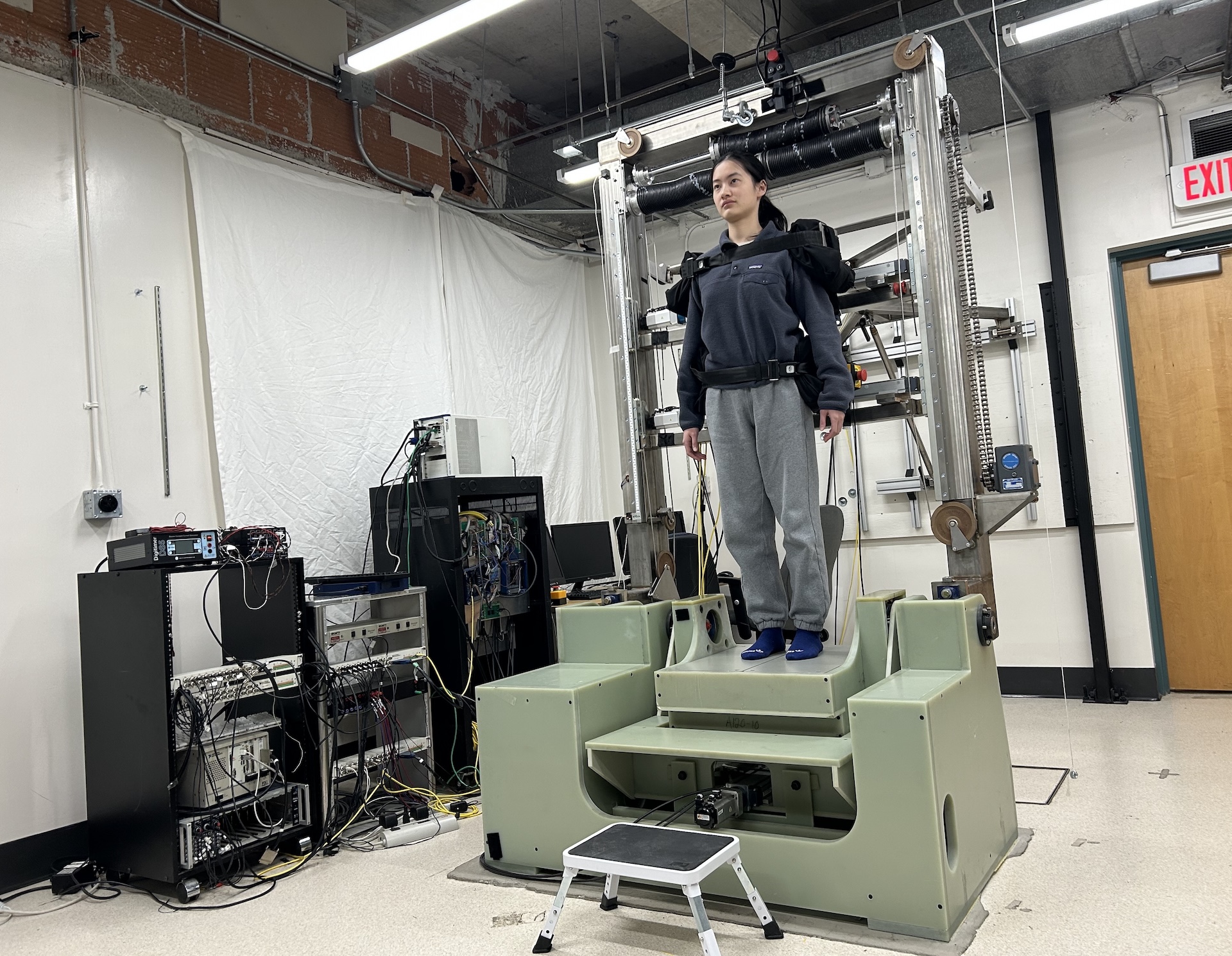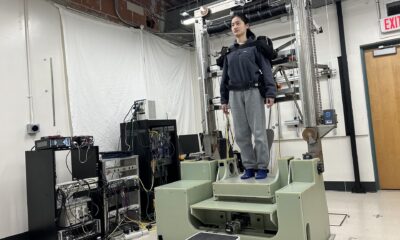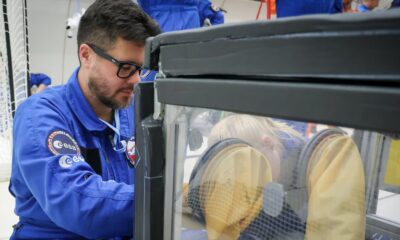Top Stories
UBC’s Groundbreaking Robot Reveals Secrets to Balance, Reduces Fall Risks

BREAKING: Researchers at the University of British Columbia (UBC) have unveiled a revolutionary ‘body-swap’ robot that could transform how we understand balance and fall prevention. This critical discovery, published today in Science Robotics, provides new insights into how the brain maintains stability and could lead to innovative solutions for the millions at risk of falls.
This advanced robot allows scientists to manipulate the physical forces acting on the body, revealing how sensory feedback delays affect balance. As Dr. Jean-Sébastien Blouin, a leading researcher at UBC, explains, “What’s exciting is that our finding suggests we can help in another way—by giving the body a small mechanical boost that makes balance easier for the brain.” This breakthrough could pave the way for new assistive devices and rehabilitation strategies aimed at older adults and individuals with balance disorders.
Every second, the brain coordinates signals from our eyes, inner ears, and feet to maintain balance. However, when nerve signals slow—due to aging or conditions like diabetic neuropathy—this process becomes increasingly difficult. The UBC robot simulates these delays, allowing researchers to study the brain’s response in real-time.
In a series of experiments, participants experienced dramatic instability when the robot introduced a delay, mimicking the effects of slowed nerve signals. The findings showed that the brain processes spatial and temporal information similarly, which is crucial for maintaining balance. Participants reported feeling significantly less stable when inertia was altered, demonstrating the robot’s ability to replicate the conditions that lead to falls.
In the final experiment, when the robot increased inertia and viscosity, participants regained control, stabilizing their movements by as much as 80 percent. “We were amazed that adding inertia and viscosity could partly cancel the instability caused by late feedback,” said Paul Bilzner, lead author and former UBC kinesiology master’s student.
Falls present a significant health risk, particularly for older adults, costing Canada’s healthcare system over $5 billion annually. This groundbreaking research provides a pathway to potential solutions, including wearables that apply resistance during swaying or robotic trainers that help patients adapt to sensory delays.
The UBC robot will soon be relocated to the new Gateway health building, where it will be used to further advance technologies aimed at preventing falls and supporting healthier aging. This initiative involves collaboration among researchers from various UBC faculties, including the Balance and Falls Research Centre, School of Kinesiology, and the Centre for Aging SMART.
As this research progresses, the implications for fall prevention and improved quality of life for vulnerable populations are profound. The work spearheaded by UBC scientists may not only lead to innovative assistive technologies but could also influence the design of more stable humanoid robots.
Stay tuned for further updates on how this groundbreaking research is shaping the future of balance and fall prevention.
-

 Politics3 weeks ago
Politics3 weeks agoSecwepemc First Nation Seeks Aboriginal Title Over Kamloops Area
-

 World4 months ago
World4 months agoScientists Unearth Ancient Antarctic Ice to Unlock Climate Secrets
-

 Entertainment5 months ago
Entertainment5 months agoTrump and McCormick to Announce $70 Billion Energy Investments
-

 Lifestyle4 months ago
Lifestyle4 months agoTransLink Launches Food Truck Program to Boost Revenue in Vancouver
-

 Science5 months ago
Science5 months agoFour Astronauts Return to Earth After International Space Station Mission
-

 Technology3 months ago
Technology3 months agoApple Notes Enhances Functionality with Markdown Support in macOS 26
-

 Top Stories2 months ago
Top Stories2 months agoUrgent Update: Fatal Crash on Highway 99 Claims Life of Pitt Meadows Man
-

 Lifestyle3 months ago
Lifestyle3 months agoManitoba’s Burger Champion Shines Again Amid Dining Innovations
-

 Politics4 months ago
Politics4 months agoUkrainian Tennis Star Elina Svitolina Faces Death Threats Online
-

 Sports5 months ago
Sports5 months agoSearch Underway for Missing Hunter Amid Hokkaido Bear Emergency
-

 Politics4 months ago
Politics4 months agoCarney Engages First Nations Leaders at Development Law Summit
-

 Technology5 months ago
Technology5 months agoFrosthaven Launches Early Access on July 31, 2025





















